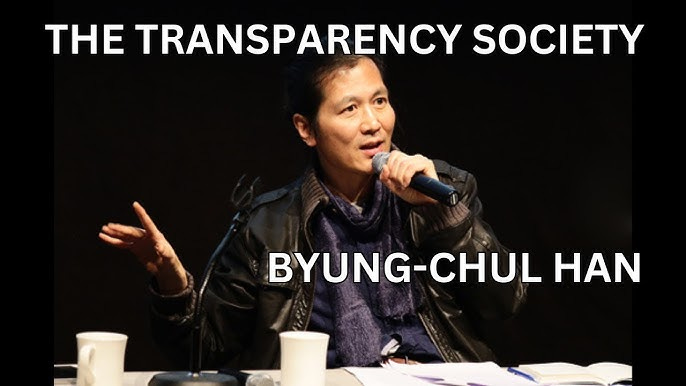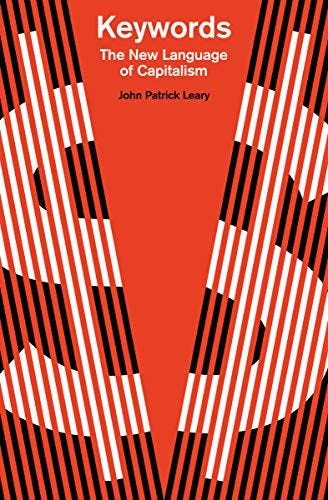***Status Update is from the section of the manuscript titled Capitalism Games.***
STATUS UPDATE
Today, when people take personality quizzes because they are fun or required for employment, they are producing behavioral data. As we have recently learned, such data, innocent as it seems, can be used by organizations to control our actions, how we vote, where we shop, and what we buy. 1
-Emily Martin,
Experiments of the Mind: From the Cognitive Psychology Lab to the World of Facebook and Twitter
Set up: Tell me what’s on your mind, so you can merge your “self” with corporate power.
Clinical explanation: Eric Berne used the expression “couch broken” to describe the patient’s level of training and treatment in the therapy process. As with a domesticated dog who only uses nature for a bathroom, the trained therapy patient walks into the therapy room, sits or lies down on the couch, and talks about themselves. If they are “couch broken,” they know the rules for therapeutic engagement. No stain is left on the furniture. Their Status Update—what’s on their mind—is an emotionless recap of what the person has been engaged in since the previous session.
In contrast with the Facebook (Meta) mantra, “move fast and break things,” 2 the therapy patient mantra for Status Update is “move slow and try not to break down” (i.e., show affect). When the patient uses a long monologue (Status Update) in group treatment, it is likely part of an Influencer game. It is a pastime if the patient engages in Status Update to bring their therapist or the group up to speed.
Original game: For Berne, pastimes have a repetitive feature and are “socially programmed” through the discussion of “acceptable subjects in acceptable ways.” This is analogous to multiple-choice or limited selection answers. 3 For example, discussions on the weather, upper management, or that big event are pastimes. The frame of reference is socially and culturally prescribed. This social programming results in “semi-ritualistic topical conversations.” 4 The transactions are simple and structure an interval of time based on procedure and/or ritual.
For example, Small Talk or Chit Chat (sports, gossip), Morning After (hangover), Psychoanalysis (“It is because of my unconscious oral frustration”) are all pastimes.5 A pastime may become a game when the therapist and/or the patient habitually focus on the “crisis of the week” or how awful things are, “Kids Nowadays…,” which is consistent with Ain’t It Awful (see Media games). The benefit of a pastime is that choices are predetermined within a specific cultural frame and there is no chance of deep, affective exchange (feelings).
In contrast to games and pastimes, intimacy is a candid, free exchange (giving and receiving) of affective communication between people. Intimacy precludes profit and loss. Relationality without exploitation is “game-free”. 6 Therefore, a patient sharing pictures, emails, or text-message threads with the therapist is not intimacy. It is Artificial Intimacy (see AI). This form of “sharing” is an updated (digital) version of show-and-tell.
Thesis: The practice of defining and promoting oneself across time—as a self—is inscribed in the American political-economic system. No more so than online. Capitalism’s imperative is to be a somebody who “wins.” This requires that the person play Be Mr. Wonderful (BMW). The Status Update creates and maintains a continuity of the self across time, e.g., a tweet from 2014 or an interview from 2020 is linked with the person in the present.
Like in psychotherapy, Status Update is a socially programmed pastime by Big Tech (“What’s on your mind?”). In both cases, the repetitive nature of the activity—and the lack of intimacy—make Status Updates grow boring. Additionally, the platform controls the framing for the update, e.g., Instagram Story, Substack Note, or SnapChat Snaps, and the social programming, e.g., selection of emojis, like button, etc.
On social media, the pastime of Status Update evolves into another game. For example, Trump supporters play a digital Kick Me game to “own the libs” by sharing a meme that says, “Fuck your feelings.” Similarly, the Mass Shooter gameplayer finds White engaging in online “leakage” of future crimes in nearly half of the incidents. If White leaks then they are much more likely to engage in a performative (costume or live stream) massacre. 7

The digital trails (posts, texts) and leaks reference the desire to exterminate others. Columbine killer Dylan Harris made his private, internal experience public. He had a website that included bomb making ingredients and a “shit list” of the despicable. 8
Aim: Online corporate owned platforms that are part of the digitalization of all aspects of life function to merge the private self with the public self. In Christopher Hedges (2008) book American Fascists: The Christian Right and the War on America he notes how repressive or dictatorial movements “harness the power of modern communications to keep their followers locked in closed systems.” 9
The faceless virtual world has a built-in imperative: the self is meant to be transparent. The audience for anything uploaded to the internet is for everyone on the internet. The result is conformity within specific frames of reference, e.g., Covid, Ukraine war, Gaza, etc. The result is what philosopher Byung-Chul Han calls the hell of the same. In his book, The Transparency Society, Han (2015) explains the result of this ostensible freedom to share (inner compulsion) within a digital panopticon:
The digital society of control makes intensive use of freedom. It is only possible thanks to voluntary self-illumination and self-exposure. It exploits freedom. The society of control achieves perfection when its inhabitants do not communicate because of external constraint but out of inner need—that is, when the fear of giving up a private and intimate sphere yields to the need to put oneself on display shamelessly. 10
Interwar fascism fused the private and public self. The citizen’s body was owned by the state. The citizen was involved in an enforced symbiosis with the state to eliminate their private self. In Making the Fascist Self, Berezin (1997) writes about the contrast between classical liberalism and fascism. The former holds the public and private self as separate identities, but “fascism tries to reverse or obliterate the boundaries between the two.” Berezin (1997) continues:
Who we are, how we define and conceive of ourselves, how we recognize others who are one of us and who are not are connected to how we construct ourselves in public and private space. 11
For example, Italian fascism utilized mass performances, state sanctioned holidays, spectacles, and exhibitionism in the piazzas (public squares) to alter temporality. The result rejected the split between public and private selves, which is the “the cultural core of liberal democracy.” Fascist movements “reaffirm the self as a totality.” 12
In The Anatomy of Fascism, Robert Paxton notes how fascist parties wanted total social control by the state and a corporatist economic organization. 13 Fascist regimes radically eliminate boundaries between the private and public self to disappear the private self. 14 Nothing was hidden from the gestapo (secret police). To evade the Nazi regime’s surveillance required that the citizen be sleeping. Now, the level of privacy is the same, but the perception is that the individual is “free” to “share.” Netflix’s only competition is people sleeping. There are digital applications that monitor sleep and dream life as well as devices (smartwatch, smart rings, etc.) that surveil the inside of the body to monetize data. The functional result of a corporate controlled merger of the public and private self is the same as the state-sanctioned version: total social control.
In the U.S. corporate state, the public and private self is not based on an enforced symbiosis. The merger is voluntary because of the user’s sense of “freedom.” (see Notes on Fascism). The self is now transparent: everyone shares their political views (“Vote blue no matter who!”), dating or marital status, family composition, vaccine status, sexual orientation, etc. Additionally, gender pronouns are publicly listed under profiles (e.g., they/them). Exhibitionism via self-broadcasting is experienced as a personal choice and not totalitarian control. As Jenny Odell notes in How to Do Nothing: Resisting the Attention Economy, the social media pretext is the vital importance of broadcasting our private thoughts to the world:
…persuasive design collapses context within our very thought processes themselves by assuming we should share our thoughts right now—indeed, that we have an obligation to form our thoughts in public! 15
The corporate takeover relocates private spheres into public areas for privatization (finance). The public is privatized, and privacy is publicized. The essence of fascism is when the private sphere is completely consumed by the public sphere, which differentiates fascist regimes from authoritarianism and classical liberalism. 16
Now, the private aspects of the self are voluntarily made transparent to the public. For example, the privacy of one’s home becomes “open to the public” by private enterprise, e.g., Airbnb, Zillow, HGTV. Personal assets that are private become fused with public markets. The same goes for automobiles (Lift, Uber, Turo, Getaround). The private space (home, car) is shared in online apps and the details (status) are constantly updated. One can check and re-check the ever-changing details of the asset (sold, pending, for sale, foreclosed, rentable), including oneself (“Yay, I got another subscriber!”).
In the new “sharing economy,” goods such as cars, houses, and new technologies are not produced. Instead, platforms and their applications extract rents from “assets owned by others.” 17 In John Patrick Leary’s book Keywords: The New Language of Capitalism, he describes how the word “share” or “sharing” indicates a sense of trust and ownership. Therefore, the Status Updates of Airbnb hosts and Uber drivers implies that they are not simply sharing their private property “but some aspect of themselves.” 18 This “sharing” builds “community” and “connection” via “conversation.” (see Media games).
With the virtual world, the subject (user) is now able to give a Status Update across multiple tech platforms for monetization (see Influencer). This information is recombined and shared across channels, profiles, podcasts, etc. Once upon a time (and still to some extent) a person went to a financial officer and updated them on their financial status, credit score, assets, etc. Now wearables and smartphones—with the ubiquity of online access—symbiotically tie the private self to public markets.
Thus, Capitalism games now have a “honey trap” phenomenon to them (see FOOLS). The status of the user is seamlessly updated in real time. The Status Update ceases to be a pastime when a third party is “Here To Help!” make use of the data, e.g., Big Tech, health insurance companies, etc. Instead of twentieth-century informants and listening devices for a secret police force, Big Tech is Here To Help! the user manage, share, or educate themselves for “free.”
Antithesis: To do nothing online is to be nothing, i.e., a nobody. An absence of Status Updates means an absence of “content.” A person’s communication with others disappears versus being stored in computer networks. Online, content is curated by content curators. The word content used to refer to material inside of a book or on a television network and not the actual book or television show. Because the word has changed, now there is “violent content,” “sexual content,” and “explicit content” that refers “to knowledge and information that should be policed.” 19 Leary (2018) emphatically states how content refers to “an immaterial substance” consisting of digital words. What used to be the selection, editing, or photoshopping of files is now a “form of expertise equivalent to the work of a museum scholar.” 20 With the aid of Big Tech and e-commerce algorithms, so-called “content”
is any quantifiable artistic or intellectual substance that can be measured, repeated, and reliably delivered, at the lowest cost to the owners of capital. 21
Users that have a “channel” or use a platform do not own the content they create. They have access to it, but it is managed by the company for advertising revenue. To monetize the channel, the influencer ends up recording promotional commercials to (ironically) encourage their subscribers and followers to invest in gold and silver (real “things”). The enforcement of the Status Update is not explicit and does not come from the state directly. It is a socially inscribed pastime: either become a somebody or be a loser. Odell (2019) summarizes the “cost” to the person who does not engage in Status Update:
In a situation where every waking moment has become the time in which we make our living, and when we submit even our leisure for numerical evaluation via likes on Facebook and Instagram, constantly checking on its performance like one checks a stock, monitoring the ongoing development of our personal brand, time becomes an economic resource that we can no longer justify spending on “nothing.” It provides no return on investment; it is simply too expensive. 22

In psychotherapy, the transparency of oneself manifests emotional resonance and intimacy. The information is kept private by the therapist (unless they are using an AI notetaker or telehealth platforms). The transparency of the digital self via the Status Update ensures a form of self-promotion, self-branding, and self-incorporation, i.e., the pastime of Status Update becomes a Capitalism game. The imperative encroaches on an economic Ultimatum game. One must invest in oneself as a “thing” for growth and monetization or become an alien lifeform (nobody). Being a nobody who knows they do not know and cannot explain this known not-knowing, is very close to Zen.
ANALYSIS
Thesis: Voluntarily eliminating the private self with the aid of corporate platforms.
Aim: Continuity of the subjective public self; monetization of data; social control (herding) via corporate-state fusion.
Examples: (1) psychotherapy (2) social media profiles and channels.
Antithesis: Desertion from the internet.
References
p. 50, Martin, E. (2021). Experiments of the mind: From the cognitive psychology lab to the world of Facebook and Twitter. Princeton University Press: New Jersey.
p. 11, Chan, A.S. (2025). Predatory data: Eugenics in big tech and our fight for an independent future. Oakland: University of California Press.
p. 23, Berne, E. (1972). What do you say after you say hello?: The psychology of human destiny. New York: Grove Press, Inc.
p. 17, Berne, E. (1964). Games people play: The psychology of human relationships. New York, NY: Grove Press, Inc.
p. 43, Berne, E. (1964). Games people play: The psychology of human relationships. New York, NY: Grove Press, Inc.
p. 231-232, Berne, E. (1966). Principles of Group Treatment. Oxford University Press: New York.
p. 79, Peterson, J. & Densley J. (2021). The violence project: How to stop a mass shooting epidemic. Abrams Press: New York.
p. 18, Cullen, D. (2009). Columbine. Twelve: New York.
p. 37, Hedges, C. (2008, c2006). American fascists: the Christian Right and the war on America. New York: Free Press.
p. viii, Han, B.C. (2015). The transparency society. Stanford Briefs: Stanford, CA.
p. 20, Berezin, M. (1997). Making the fascist self: The political culture of interwar Italy. Cornell University Press: New York.
p. 6, Berezin, M. (1997). Making the fascist self: The political culture of interwar Italy. Cornell University Press: New York.
p. 199, Paxton, R. (2005). The anatomy of fascism. Vintage Books: New York.
p. 144, Paxton, R. (2005). The anatomy of fascism. Vintage Books: New York.
p. 173, Odell, J. (2019). How to do nothing: resisting the attention economy. New York: Melville House.
p. 144, Paxton, R. (2005). The anatomy of fascism. Vintage Books: New York.
p. 158, Leary, J.P. (2018). Keywords: The new language of capitalism. Haymarket Books: Illinois.
p. 157, Leary, J.P. (2018). Keywords: The new language of capitalism. Haymarket Books: Illinois.
p. 51, Leary, J.P. (2018). Keywords: The new language of capitalism. Haymarket Books: Illinois.
p. 58, Leary, J.P. (2018). Keywords: The new language of capitalism. Haymarket Books: Illinois.
p. 52, Leary, J.P. (2018). Keywords: The new language of capitalism. Haymarket Books: Illinois.
p. 15, Odell, J. (2019). How to do nothing: resisting the attention economy. New York: Melville House.



















